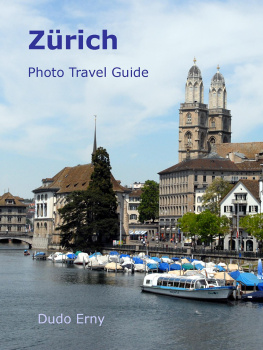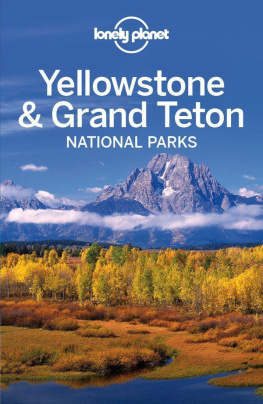Dirt Cheap Photo Guide to Grand TetonNational Park
Jeff R. Clow
Copyright 2011 Jeff R. Clow
Smashwords Edition
Smashwords Edition, License Notes
This eBook is licensed for your personalenjoyment only. This eBook may not be re-sold
or given away to other people. If you wouldlike to share this book with another person,
please purchase an additional copy for eachrecipient. If you are reading this book and did
not purchase it, or it was not purchased foryour use only, then please return to
Smashwords.com and purchase your own copy.Thank you for respecting the hard work
of this author.
Chapter One - The Photographer's Quest

Oxbow Bend. The Snake River Overlook. MoultonBarn. Legendary landscape locations in Grand Teton National Parkthat have beckoned photographers for decades. You've heard of themand you've seen countless shots from each of these spots, but doyou know what's the best time to visit them during the day? Do youknow the alternative angles that produce images that aren't thestandard postcard view of the place?
And what about off the beaten path locationssuch as Buffalo Fork Ridge or Hedrick Pond Overlook? Have you heardof them? Probably not. They are accessible but without a knowledgeof the back roads that cross the main highways, they don't get manyvisitors. They are equally impressive when compared to their morefamous brethren in the park, but they don't show up on any maps. Doyou know how to get to them - and is it safe to do so in a rentalcar?

That's where this inexpensive photo guidecomes in - a written recap of the area in and around Jackson Hole,Wyoming that is focused on one thing. Photography. Not on where tostay or where to eat, but where to stand and when to do so.
I've been visiting the area for ten years andhave been leading photo tours for the last three years to thislandscape and nature photographer's paradise. And the first time Ivisited Jackson Hole and Grand Teton National Park, I missed out ondozens of different photo spots because I didn't know who to askand I didn't know my way around the area.
I remember asking myself repeatedly - is thisdirt road on my left private or public? Is the fence in front ofthe barn a barrier to me or to the bison and can I go around itwithout getting in trouble? And then I would visit some of the wellknown galleries in the town of Jackson, Wyoming and see a shot thatI'd love to take, but I had no idea how to get there. Or I wouldhave two days to take photos and I wasn't sure where to devote thatfirst hour just before sunrise. Should I go to the barns or go toOxbow? Thus, my first couple of visits to the area were equal partsreward and frustration.
But I was lucky. My step-daughter and herhusband had just moved to the area and so my wife and I had areason to visit. We loved the place and we could visit withoutneeding to shell out hundreds for hotel rooms. And so I began myquest - my quest to find the best places in Jackson Hole for aphotographer and my quest to understand when the light was going tobe best at each of those locations.
And slowly, but surely, I began running intolocal photographers at some of the sites. I would strike up aconversation and ask what other spots they would recommend. Somewere very willing to tell me and others acted like that I wasasking them for the secret formula for a well known soft drink.They clammed up and basically gave me the cold shoulder. But afteryears of asking and exploring every back road I could find in thepark, I began to get a real sense of the place. A sense of the"vibe" that you sometimes hear the locals talk about.
Fast forward to today. Many of those photosthis self taught landscape and wildlife photographer took ended upcatching the eye of editors at Getty Stock Images. They are nowbeing used by companies all over the world in advertising andpromotion campaigns. My own portfolio on Flickr.com has beenvisited over four million times and I've won lots of accolades. Butthe truth is that so much of good photography is simply based onone thing - and one thing only.
If you want to get better and better atphotography - you've got to stand in front of betterthings.
Then things like light and composition anddepth of field come into play. But - other than repeated visits tothe area - how does a photographer on a quest figure out where andhow to spend their precious time when they visit Grand TetonNational Park? Do they grab a rental car and head north on Highway89 out of Jackson? Well, that will work. Some of the most iconiclocations are literally on the main road. But the problem becomesone of prioritizing and knowledge - or lack thereof. Oxbow Bend iseasy to find, but if you wait until noon to hit this magical spot,the famous mirror reflection of Mount Moran in the bend of theriver is likely going to be gone.
Why? Simple weather patterns and the factthat on most days the winds pick up after 9:00 a.m. just enough toripple the water and disrupt the reflection. Will you still get adecent shot of the place? Sure. But the iconic shot that you'veseen in all the guidebooks may be out of your grasp.
Thus, you need a guide. You can employ one ofthe many local photographers who offer guided tours of the area forvisiting photographers. I personally know a couple of people who doa terrific job and will take you exactly where you need to go andwhen. The downside? They are expensive - usually in the range of$500 to $900 per day per person. But you'll get the shots thatyou've always wanted.
Or you could join a photo tour or photoworkshop focused on the area. During the spring, summer and fallmonths there are workshops almost every weekend. Many led by wellknown photographers whose work has appeared in many nationalpublications. My small company - Dirt Cheap Photo Tours - offersinexpensive guided tours for small groups several times a year. Butonce again, there are some limitations. You have to be in the areawhen the workshop or tour is held. And you have to travel with sixto ten other people - a fun experience but maybe not what you wantto do if you're visiting the area with your family and thephotography part of your trip is only part of the overallexperience.
Or you could use this book as your personalguide to the area that will allow you to travel at your own paceand visit the sites that resonate with you personally.
As my knowledge of the Jackson Hole areabecame well known, I started getting emails from strangers almostevery week. They would invariably begin like this:
"Hi, Jeff. I saw your photos of GrandTeton National Park online and I'm visiting the area next month andwas hoping you could give me some pointers. I'm going to betraveling with my kids and I only will be in Jackson Holefor a couple of days because we're spending most of our time inYellowstone. Can you tell me where I should devote the morninghours to during my visit?"
Over the course of the last several years,I've received countless requests similar to this and I've tried mybest to be responsive. But the harsh fact is that there is too muchtoo see - and photograph - in the park to be able to give adefinitive answer. If you're a landscape photographer, then thereare a half dozen places that are "must visit" in my opinion.
But if you also want to have the best chanceto encounter - and photograph - wildlife, then there are otherplaces that are better to visit if time is of the essence. Youwon't get a killer landscape photo at these locales, but you'll bemuch more likely to run into a deer or a moose or sometimes abear.
Next page








